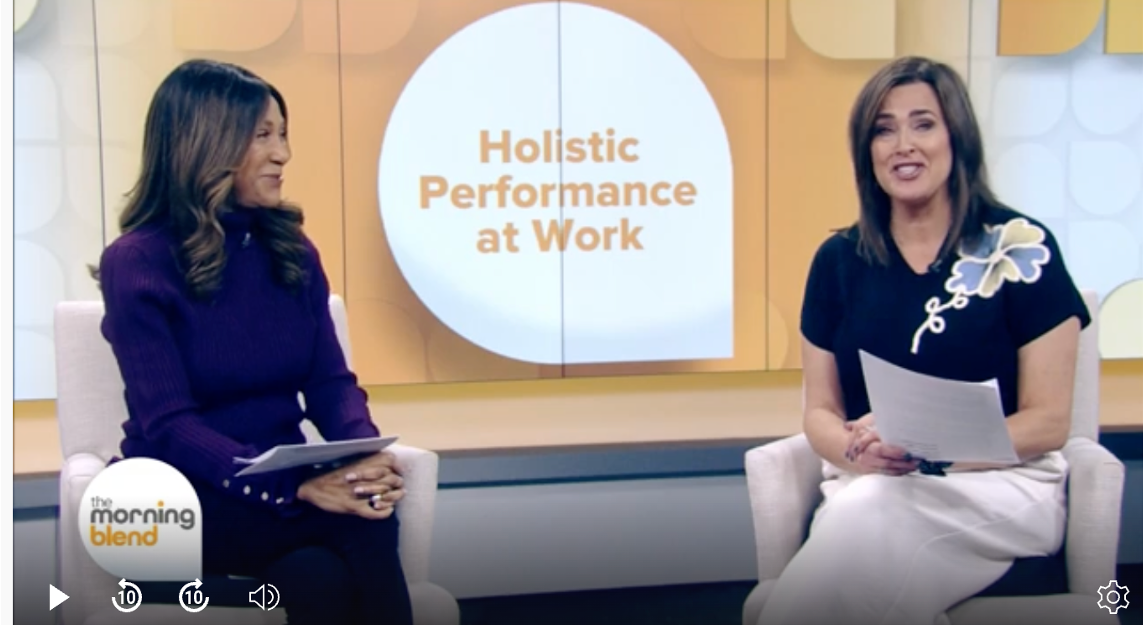Holistic Performance Teams: A New Model for Sustainable Success

The old idea of high performance is breaking down.
Yes, teams are getting things done—but often at a cost no one talks about until it’s too late. Burnout is rising. Disengagement is growing. People are doing more, but feeling less seen, less energized, and less connected.
This isn’t sustainable. And deep down, we know it.
The world of work keeps changing, and the pace isn’t slowing. If we want lasting performance, we need a new kind of leadership—one that doesn’t just focus on outcomes, but on the people making those outcomes possible.
Holistic Performance Teams are built on that shift. They succeed not by pushing harder, but by making room for the whole human at work—where people feel supported, trusted, and genuinely valued. And when people feel fueled, performance follows.
This isn’t about doing more—it’s about doing things differently. And it starts with small shifts.
3 Micro-Habits to Build a Holistic Performance Team
These habits don’t take more time. They take more intention. Done consistently, they spark trust, connection, and shared momentum.
Lead by Example: Make Wellbeing Visible
Leadership sets the tone. If you’re running on empty but pretending everything’s fine, your team will do the same. Instead, show them what it looks like to take care of yourself—and that it’s okay to do the same.
Say things like:
- “I’m feeling stretched, so I’m blocking time to reset.”
- “That project took a lot out of me—taking a breather before jumping in again.”
- “I’m trying to pace myself better this week. Anyone else feeling that too?”
Also, regularly point people to wellbeing resources—whether it’s EAP support, gym discounts, or mindfulness sessions. A short monthly reminder goes a long way. Most people forget what’s available until it’s too late.
This kind of modeling of self-awareness and boundaries makes it safe for others to do the same. It also builds psychological safety, reduces stigma, and opens space for honest conversations—before burnout hits.
Use 1:1s to Check In, Not Just Catch Up
1:1s aren’t just for status updates—they’re a chance to connect on what really matters. The best ones create space for both the work and the person doing the work.
Go beyond tasks by asking questions that explore progress, motivation, and support. Try:
• “What’s one win and one challenge from this week?”
• “What helps you stay motivated when things feel tough?”
• “What do you need right now—more of, or less of—to feel supported and steady?”
These kinds of questions show you’re paying attention not just to performance, but to the human behind it. They help build trust, uncover needs early, and create a culture where people feel seen, not just measured.
Because when people feel supported, they don’t just do the work—they own it.
Add a Wellbeing Moment to Every Team Meeting
It doesn’t need to be deep. It just needs to be regular.
Take 60 seconds in each team meeting to ask something like:
- “What’s one way we supported each other this week?”
- “What’s something we’re proud of right now?”
- “What would help us feel more energized or connected?”
These small check-ins normalize talking about culture and wellbeing—and remind everyone that building a great team experience is a shared job.
The Shift That Lasts
Performance and wellbeing aren’t mutually exclusive. In fact, they rise together—when leaders are intentional.
Holistic performance isn’t about lowering the bar. It’s about removing the invisible barriers that keep people from doing their best: exhaustion, isolation, feeling unseen. When people feel safe, connected, and motivated, the results speak for themselves.
So start small. Be consistent. And trust that when you invest in people, performance becomes the natural outcome.
Let's Connect
Beth Ridley is a former corporate executive turned organizational transformation consultant, speaker and author. Beth combines 25 years of global leadership and management consulting experience with expertise in diversity and inclusion and positive psychology to partner with leaders to transform workplace cultures to better achieve their vision and goals. Beth’s work is featured in national publications and she frequently delivers keynotes and workshops at events around the world. Beth lives with her husband and three children in Milwaukee, Wisconsin.

